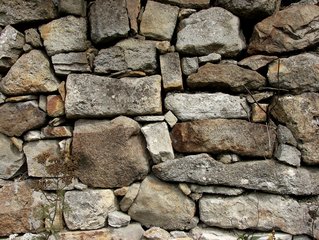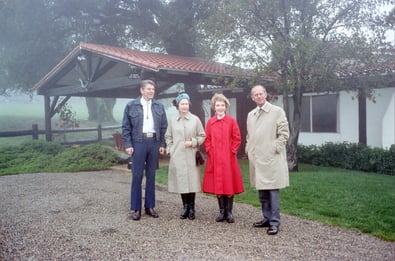The Eyesore
Some neighbors might ignore you quite satisfactorily, other neighbors are kind or conversational in passing, while some offer more exchange, even the possibility of becoming true friends. And then there are those neighbors that consider your mere presence an insult, the sight of you and your domain an anathema. This grumbling soul can for the most part be ignored by you, you imagine that there must be good reasons, and as you are not in charge of this curmudgeon's emotional state, it is best to simply go on about your business, keeping the glaring eyes in your periphery. Seething anger is unpleasant all the way to being scary and best not to jostle a hornet's nest. Until the day when it goes up--the eyesore, that pure symbol of animosity, a monument to meanness: an ugly fence. A spite fence. An intentionally unappealing fence that:
- has no purpose
- goes with nothing
- interrupts everything
- calls attention to itself
Neighbors
Perhaps the phenomenon of "spite fences" is a new concept; generally, it's when a neighbor builds a fence to purposefully antagonize one's neighbors. If the fence is unattractive, the eyesore may elicit a response from the neighborhood as a whole or in part. If not already, the neighbors may become cut off from the contentious builder of the fence or from other neighbors as frustration builds and sides are taken. Litigation that involves such disputes is difficult to measure, as the offense for the most part is psychological with varying circumstances.
In the U.S., the blocking of light and air is not considered a recognized offense (as it can be in other countries.) If the issue is the height of a fence, local codes may be consulted and the law may have your back; however, merely blocking the view of a neighboring yard is not a cause for an official complaint. A major directive on fence building is that it not cause injury to others. Some states have adopted ordinances regarding spite fences and guidelines have been created. Generally, it must be established that the fence is solely built to antagonize and has no practical or seemly purpose. It is up to the defendant to prove that the fence has a function other than to perturb those living nearby.
Communicating Objections
At the outset, it may be important to consider that you're not the one to approach the offender. One of your other neighbors may have a better relationship with the problematic fence owner and may be able to smooth the way. If you've collected other complaining neighbors, it may be best to put your objections in writing rather than showing up at the door en masse. On your own time, venting and gossiping about your neighbor may seem unifying with others, but it may be fueling the fire and raising your blood pressure. If at all possible, depending on the willingness of the various parties involved in a fence dispute, a mediator might be able to assist in a standoff. A trained mediator enables a discussion with both parties with the aim of establishing a dialogue, exploring the fence's (and the neighbor's) purpose, and the potential dismantling of the fence.
Lacking a Resolution
You must question yourself and realize that the conflict may never go away and that you must acknowledge your part in the dispute, working on the triggers the fence brings up in you.
- Is it possible you are being merely self-seeking, arrogant, or high-minded?
- Is your being right propping up a sense of self-righteousness that borders on obsession?
- Are there any inroads you could make to mollify the hostility with the neighbor?
- Is there a way you can introduce humor into the situation moving forward, if only for yourself?
Not feeding the antagonism may assist in a resolution. Adjust your perspective and try to find a bigger picture to help diffuse the tension. Taking a step back, and waiting to respond when conflict arises is always a good plan. It never hurts to retreat, reflect, allow your blood pressure to lower, and then return to the fray, if indeed necessary.
While we're on the subject of neighbors and boundaries, have a look at our blog, "Does a Good Fence Make a Good Neighbor?"




















